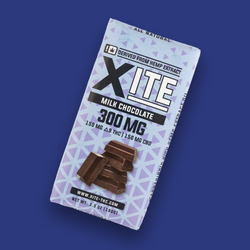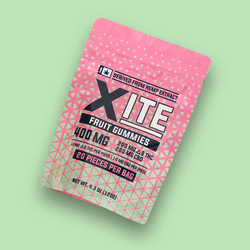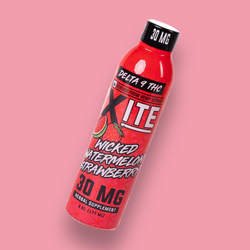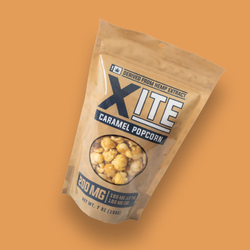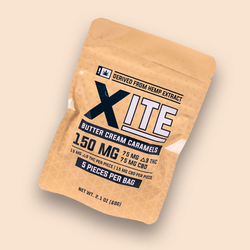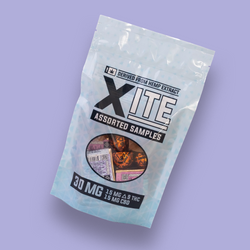If you are wondering how oils are infused into our edibles, here is a basic guide to hemp plant anatomy and where the process starts. Naturally, cannabis and hemp are annual flowering plants. In other words, they complete an entire life cycle in one year, from germination to seed dispersal. If you keep the plant indoors, they can survive for longer than one year, though. As a dioecious plant, cannabis has female and male counterparts. On the other hand, they can be born as a hermaphrodite in some cases. Sometimes, this happens because of induced stress and unstable genetics.
About Hemp Seeds
Hemp seeds are the starting and ending point of the plant's life cycle. In nature, a cannabis plant starts from a seed and ends its life by producing mature seeds. If you are growing these plants, it is faster to use a seed as starting material. If you clone the plant, it will not grow as fast. Seed-grown plants usually have a larger yield and are stronger, too.
Seeds are formed in female plants. Then, after pollination and fertilization, a zygote forms. Once a seed is pollinated, it requires 30 to 45 days to reach full maturity. This embryo will consist of a radicle or an embryonic root. In addition, there will be two cotyledons and an embryonic shoot. The stem of the cannabis plant is created by the embryonic shoot. Then, the two cotyledons perform photosynthesis, providing nutrients to the plant.
Feminized Seeds
In nature, the male plant pollinates the female plant, and the females produce seeds. Typically, they will create a 50/50 ratio of male-to-female seeds. These are known as regular seeds, but you can produce all female seeds.
Cultivators and growers will trigger stress by interrupting the light cycle during flowering. On the other hand, they may apply solutions of colloidal silver to the soil. If you do that, then the female plants will start to produce pollen sacs. Since these pollen sacs are on a female plant, they only contain female genes. So, you can pollinate a female plant with them to produce all-female seeds.
Roots of the Hemp Plant
The above-ground parts always get the most fanfare, but plants will not grow without the roots. If any part of the plant deserves your admiration, it is the root complex. They anchor the plants to the soil and stabilize it. Plus, they nourish the entire plant with minerals and water. At first, the taproot grows out of the embryonic root, and then others branch out from it. Besides supplying the plant with nutrients, water, and oxygen, roots also transport sugars. They take them from the leaves and into the rhizosphere. After bringing sugars into the soil, bacteria and fungi convert them into usable food. At the root system's apex, the roots begin morphing into the stem, becoming thicker.
Stems of Hemp Plants
The stem connects the roots with other parts of the plant. Most of the stem's components are inside it, including the xylem and phloem. The plant's xylem transports water, nutrients, and minerals from the roots upward. In contrast, the phloem is responsible for sugar and protein transportation. The phloem transports things from the leaves to the roots. Overall, the stem's function is to give structure and stability to the plant.
Hemp and Cannabis Plant Nodes
Where the branches extend from the stem, you will find a node. Internode spots are the spaces between individual nodes. Indica plants typically have narrow node spacing, while Sativa strains are wider. If you place a light source close to the plant, it will also have smaller internodes.
Stipules on Hemp Plants
Stipules have an appearance that resembles tiny daggers near the nodes. However, nobody is certain what they are for in the hemp and cannabis plants. In other plant species, they transform into thorns, but hemp does not have any. Some botanists believe they provide protection for newly formed leaves.
Branches of Cannabis Plant Anatomy
In combination with the stem, branches form the plant's structure. Each branch will be covered with leaves and, at some point, flowers, forming a dense canopy. Some plants will branch later, creating a wide, bushy plant structure. On the other hand, some plants are shaped more like Christmas trees. Branches and stems are composed of cellulose and calcium. In the branches, there is the xylem, which is responsible for food transportation.
Leaves in Cannabis Plant Anatomy
The cannabis plant's serrated leaves are among its best-known parts. As biological agents, their role is to photosynthesize sugars using sunlight. They could be viewed almost as an organic solar panels of sorts. Cannabis plant leaves are palmate or digitate varieties. That means they are shaped into finger-like lobes extending from the base leaf. Since the edges are serrated, the leaves usually grow in opposite pairs.
Flowers from Cannabis and Hemp
Flowers are the reason most people grow cannabis or hemp in the first place. Their main function is pollen collection and seed production. If they become pollinated too quickly, it will shift the plant into seed production.
Trichomes on Cannabis Plant
Trichomes resemble tiny mushrooms, and they grow on buds and sugar leaves. These structures are resin glands that contain all kinds of cannabinoid compounds.
Oil Infused XITE Edibles
At XITE, we have the proper equipment and experience to successfully extract oils from the cannabis plant. It takes much knowledge and the appropriate tools to take the plant through its full cycle and in the end create the delicious chocolates you know and love. Give our candy edibles a try and let us know what you think!
